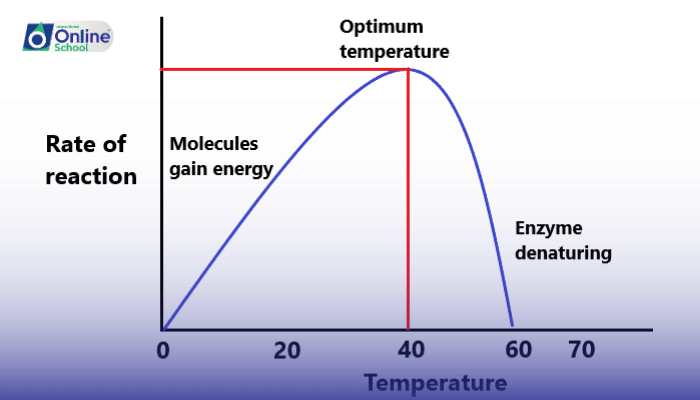
Learning Outcomes
i. Define enzyme denaturation and its impact on enzyme activity.
ii. Explain the effect of temperature on enzyme activity and the concept of optimum temperature.
iii. Understand the adaptations of thermophilic organisms to high-temperature environments.
iv. Recognize the implications of enzyme denaturation in various contexts.
i. Enzymes: The Masters of Life's Chemical Symphony
Enzymes, the molecular maestros of life, orchestrate the intricate symphony of biochemical reactions that sustain our existence. Their remarkable catalytic prowess enables chemical transformations to occur at astonishing rates under mild cellular conditions. However, these delicate molecular machines are not impervious to environmental fluctuations, and one factor that significantly affects enzyme activity is temperature.
ii. The Delicate Dance of Temperature and Enzyme Activity
As the temperature rises, enzyme molecules gain energy, leading to increased molecular motion and flexibility. This increase in temperature initially enhances enzyme activity as the substrate molecules collide with the enzyme more frequently, allowing for more rapid reactions.
iii. Reaching the Optimum Temperature: A Peak in Performance
However, there exists an optimum temperature for each enzyme, a specific temperature at which its activity is at its maximum. Beyond this optimum temperature, the increase in molecular motion becomes excessive, causing the delicate structure of the enzyme to unravel, a process known as denaturation.
iv. Denaturation: The Undoing of Enzyme Structure
Denaturation disrupts the intricate three-dimensional structure of the enzyme, leading to the loss of its active site conformation. This loss of structure renders the enzyme inactive, as the substrate can no longer bind effectively or undergo catalysis.
v. Thermophilic Organisms: Thriving in the Heat
While most enzymes denature at high temperatures, certain organisms, known as thermophiles, have evolved enzymes that can function at temperatures well above boiling point. These extremophiles, often found in hot springs and hydrothermal vents, possess enzymes with unique structural features that stabilize their active sites and prevent denaturation under extreme conditions.
vi. Enzyme Denaturation: Implications Beyond Biology
Enzyme denaturation has far-reaching implications beyond the realm of biology. In food processing, for instance, overheating can lead to enzyme inactivation, affecting food texture and flavor. Similarly, in biotechnology, enzyme denaturation can limit the shelf life of enzyme-based products.
Enzymes, the catalysts of life, are not immune to the influence of temperature. The delicate balance between increased molecular motion and enzyme stability dictates the optimal range for enzyme activity. Understanding the effect of temperature on enzyme function not only provides insights into the fundamental principles of biochemistry but also holds practical applications in various fields.